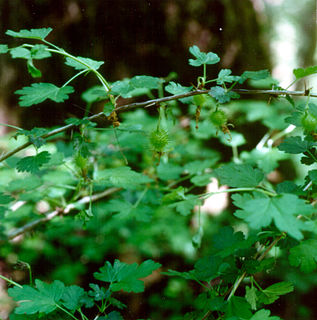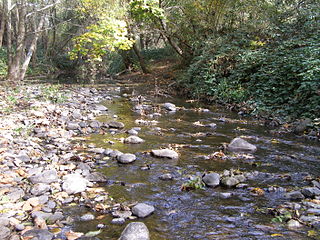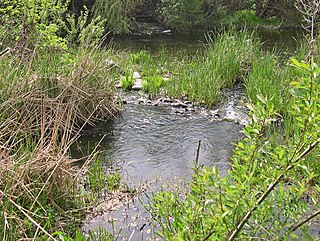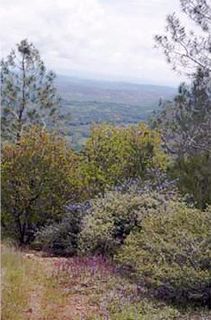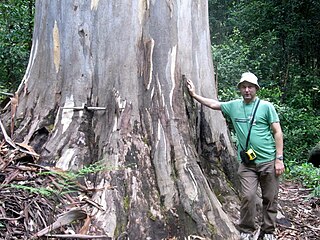| Steven's Creek Heritage Preserve | |
|---|---|
Map of South Carolina | |
| Location | McCormick and Edgefield counties, South Carolina |
| Nearest city | Clarks Hill |
| Coordinates | 33°41′N82°10′W / 33.683°N 82.167°W Coordinates: 33°41′N82°10′W / 33.683°N 82.167°W |
| Area | 434 acres (1.76 km2) |
| www | |
Steven's Creek Heritage Preserve is a nature preserve in the US State of South Carolina. It is managed by the South Carolina Department of Natural Resources. It covers 434 acres (1.76 km2) in McCormick County and Edgefield County, and was established to protect rare animal and plant species. Webster's Salamander and Miccosukee gooseberry are among the species which have few populations outside the preserve. The nearest population center is Clarks Hill, about two road miles (3–4 km) to the southwest.

South Carolina is a state in the Southeastern United States and the easternmost of the Deep South. It is bordered to the north by North Carolina, to the southeast by the Atlantic Ocean, and to the southwest by Georgia across the Savannah River.

The South Carolina Department of Natural Resources (DNR) is a South Carolina state agency charged with regulating hunting, fishing, boating, duck stamp orders, and the conservation efforts of the South Carolina state government.

Clarks Hill is a census-designated place (CDP) in McCormick County, South Carolina, United States. The population was 376 at the 2000 census.
The site was identified in 1957 by Albert E. Radford of the University of North Carolina at Chapel Hill. He noticed exceptional diversity in the tree, shrub and herb layers on the bluffs overlooking Steven's Creek, and documented six plant species which had been unknown in South Carolina up to that time. Another five species were known from only one other South Carolina location. Many of these rare species were plentiful at the site, and remain prominent there today. A remarkable feature of this plant community is that a palmetto, Sabal minor , occurs near northern inland wildflowers such as Asarum canadense . Four trillium species are also present. [1]

The University of North Carolina at Chapel Hill, also known as UNC-CH,UNC-Chapel Hill, or simply Chapel Hill, is a public research university in Chapel Hill, North Carolina. It is the flagship of the 17 campuses of the University of North Carolina system. After being chartered in 1789, the university first began enrolling students in 1795, which also allows it to be one of three schools to claim the title of the oldest public university in the United States. Among the claimants, the University of North Carolina at Chapel Hill is the only one to have held classes and graduated students as a public university in the eighteenth century.

In botany, a tree is a perennial plant with an elongated stem, or trunk, supporting branches and leaves in most species. In some usages, the definition of a tree may be narrower, including only woody plants with secondary growth, plants that are usable as lumber or plants above a specified height. Trees are not a taxonomic group but include a variety of plant species that have independently evolved a woody trunk and branches as a way to tower above other plants to compete for sunlight. Trees tend to be long-lived, some reaching several thousand years old. In wider definitions, the taller palms, tree ferns, bananas, and bamboos are also trees. Trees have been in existence for 370 million years. It is estimated that there are just over 3 trillion mature trees in the world.

A shrub or bush is a small- to medium-sized woody plant. Unlike herbs, shrubs have persistent woody stems above the ground. They are distinguished from trees by their multiple stems and shorter height, and are usually under 6 m (20 ft) tall. Plants of many species may grow either into shrubs or trees, depending on their growing conditions. Small, low shrubs, generally less than 2 m (6.6 ft) tall, such as lavender, periwinkle and most small garden varieties of rose, are often termed "subshrubs".
Soils of the bluffs were found to be atypical for South Carolina. Most of the state's soils are acidic with pH near or below 5. [2] However, some topsoils in the preserve had pH readings near 7 -- neutral on the scale. This is more typical of base-rich sites in Appalachian coves and the Midwest, where many plants rare to South Carolina are abundant. These soils correspond most closely to the Cartecay and Toccoa series which are loam or sandy loam-textured Entisols. Along Steven's Creek are alluvial silt loam Inceptisols of the Riverview series. [3] The majority of the preserve, away from the bluffs, is underlain by acidic sandy loam Ultisols of the Cataula, Hiwassee, Louisburg, and Pacolet series typical of the South Carolina Piedmont. These upland soils support mixed pine and hardwood forest over most of the preserve except in the southwest corner which has pure stands of pine.

Soil pH is a measure of the acidity or basicity (alkalinity) of a soil. pH is defined as the negative logarithm (base 10) of the activity of hydronium ions in a solution. In soils, it is measured in a slurry of soil mixed with water, and normally falls between 3 and 10, with 7 being neutral. Acid soils have a pH below 7 and alkaline soils have a pH above 7. Ultra-acidic soils and very strongly alkaline soils are rare.

Appalachia is a cultural region in the Eastern United States that stretches from the Southern Tier of New York to northern Alabama and Georgia. While the Appalachian Mountains stretch from Belle Isle in Canada to Cheaha Mountain in Alabama, the cultural region of Appalachia typically refers only to the central and southern portions of the range, from the Blue Ridge Mountains of Virginia, southwesterly to the Great Smoky Mountains. As of the 2010 United States Census, the region was home to approximately 25 million people.

The Midwestern United States, also referred to as the American Midwest, Middle West, or simply the Midwest, is one of four census regions of the United States Census Bureau. It occupies the northern central part of the United States. It was officially named the North Central Region by the Census Bureau until 1984. It is located between the Northeastern United States and the Western United States, with Canada to its north and the Southern United States to its south.












